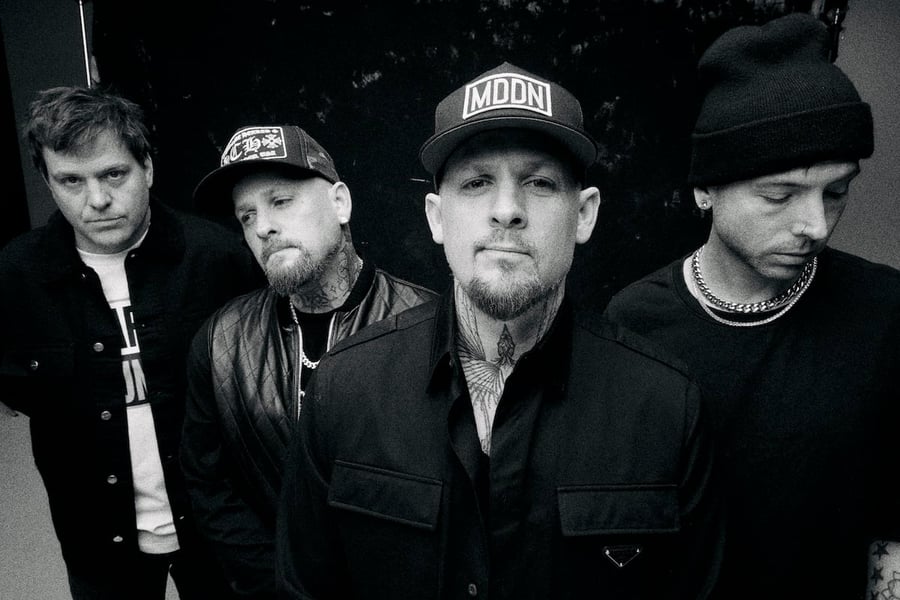As promised, Good Charlotte have officially confirmed they are heading our way in 2026.
After billboards were spotted around the country, the US pop punkers have today announced arena shows in Perth, Brisbane, Bendigo, Sydney and Auckland.
Good Charlotte will be joined on tour by fellow US heavyweights Yellowcard, who just released their first album since 2016, Better Days, and Australia’s own Kisschasy.
“Australia is such a special place to Good Charlotte and to me personally, it feels like a home away from home in many ways, and we can’t wait to head back there for some big shows,” Good Charlotte frontman Joel Madden said.
“It’s been far too long since we’ve spent time with our Aussie fans, we’re all in for a big treat.”
In a recent interview with Rolling Stone AU/NZ in support of their latest album, Motel Du Cap – the US band’s first album in seven years – Madden confirmed that they intend to hit Australia in early 2026 for arena shows around the country.
“We were trying to surprise dates this year, but it’s been too hard with something with the venues or something,” Madden revealed.
Love Music?
Get your daily dose of everything happening in Australian/New Zealand music and globally.
“I don’t know. It’s been too hard to get dates, whatever the complications have been this year, because we wanted to drop [the dates] around when the record comes. I think it’ll be arena shows, so it’s harder to move those things around. So I think we’re gonna come as quickly as we can at the top of ’26.
“That’s what we’re talking about right now.”
Read our full interview with Madden here.
The trip will be Good Charlotte’s first run of Australia since they featured on the 2018 Download Festival line-up.
Motel Du Cap is the band’s first full length release since 2018’s Generation Rx. In 2020, Good Charlotte released the single “Last December.” Since then, band leaders and brothers Joel and Benji Madden have focused on various business ventures outside of music, including livestream platform Veeps, Joel’s Artist Friendly podcast, and an entire artist management company MDDN.
General public tickets go on sale from 11am on Monday, October 20th.Click here for more details and check out all of the dates and venues below.
GOOD CHARLOTTE AUSTRALIA AND NEW ZEALAND TOUR 2026
Tuesday, February 17th
RAC Arena, Perth
Thursday, February 19th
Brisbane Entertainment Centre, Brisbane
Saturday, February 21st
Bendigo Racecourse, Bendigo
Wednesday, February 25th
Qudos Bank Arena, Sydney
Friday, February 27th
Auckland Domain, Auckland



































